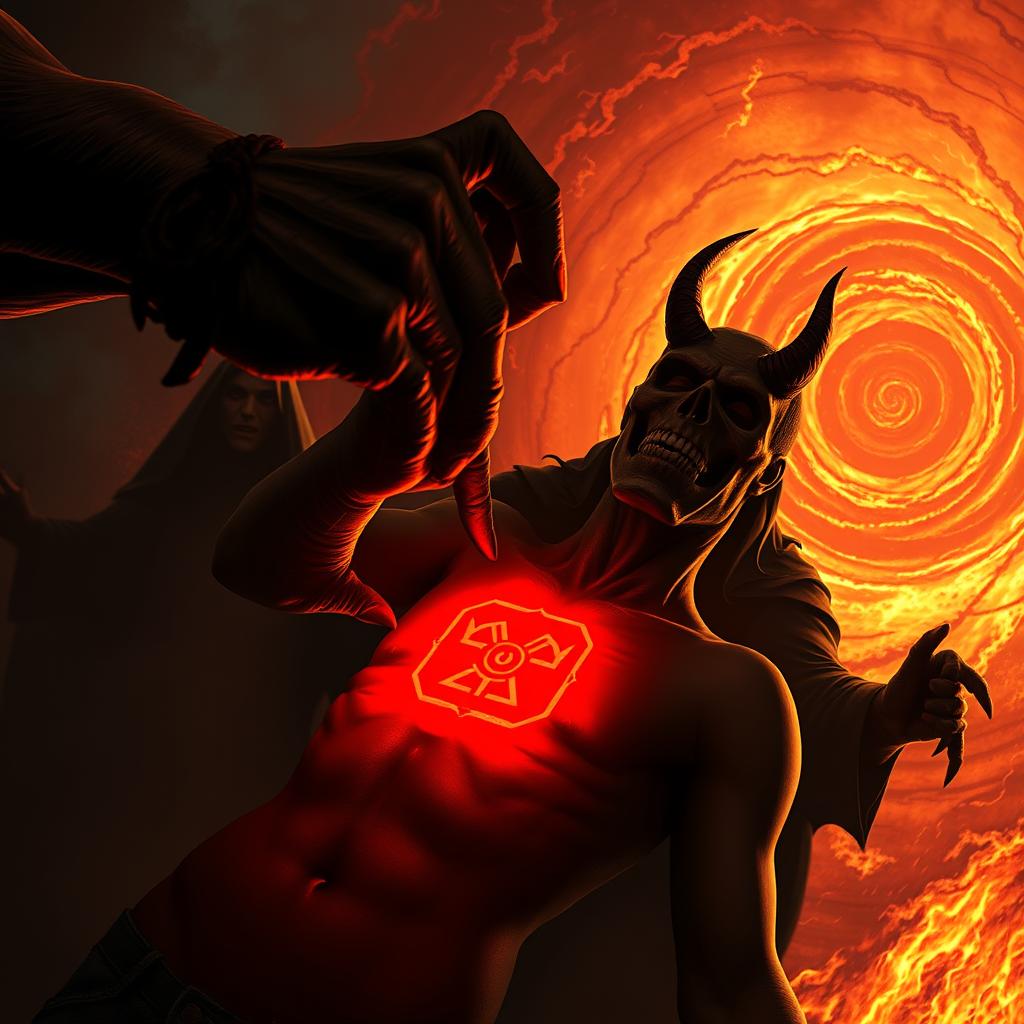I’ve always been drawn to the study of eschatology and its role in biblical prophecies. The Bible talks a lot about the end times. Almost every book has prophecies about the end of human history. Learn here end time bible verses and teaching.
Exploring biblical prophecies shows how important end time Bible verses and teaching are. They give us a peek into the future. They also remind us of the value of faith and being ready.
Key Takeaways
- Understanding eschatology is vital for comprehending biblical prophecies.
- Biblical prophecies are scattered throughout the Bible, emphasizing their significance.
- End time Bible verses and teaching offer insights into the culmination of human history.
- Eschatology is a crucial aspect of Christian theology.
- Being informed about biblical prophecies can enhance one’s faith and preparedness.
The Significance of End Time Prophecies in Scripture
Understanding end-time prophecies in Scripture means diving into biblical eschatology. This study looks at the Bible’s descriptions of the end times. It helps believers understand God’s future plans.
These prophecies are found throughout the Bible, not just in one place. Jesus’ teachings in Matthew 24, Mark 13, and Luke 21 are key. They warn about false messiahs and prophets.
Historical Context of Apocalyptic Literature
Apocalyptic literature, like Daniel and Revelation, was written in a certain time and culture. It uses symbols to share messages of hope and warning. For example, Daniel talks about empires rising and falling, which was important to people under foreign rule.
| Book | Key End-Time Themes |
|---|---|
| Daniel | Prophecies of empires, the Antichrist, and the Messiah |
| Revelation | Apocalyptic visions of the end times, the return of Christ, and final judgment |
| Matthew 24 | Jesus’ teachings on signs of the end times and the importance of watchfulness |
Why End Time Teachings Matter to Modern Believers
End-time teachings are more than predicting the future. They show God’s control over history and prepare us for Christ’s return. These teachings help believers live with an eternal focus, putting their faith and relationship with God first.
By studying apocalyptic events and eschatology, believers can understand their role in God’s plan. They learn the importance of living a life that shows their faith.
In conclusion, studying end-time prophecies in Scripture is rich and complex. It gives insights into God’s plan for humanity. By looking at the historical context and the importance of these teachings, believers can deepen their faith. They can live with purpose and look forward to Christ’s return.
End Time Bible Verses and Teaching: A Comprehensive Overview
Biblical eschatology is a key part of Christian theology. It looks at end-time Bible verses and teachings. These give us insights into the future and God’s plan for us.

Defining Biblical Eschatology
Biblical eschatology is about studying the end times as the Bible describes them. It involves understanding prophecies, visions, and teachings about the end of the world and Jesus’ second coming. The word comes from Greek, meaning “last” and “study” or “discourse.”
The Bible talks a lot about the end times. It mentions Jesus’ return, the final judgment, and the restoration of creation. These themes are found in both the Old and New Testaments.
Major Sources of End Time Teachings
The main sources of end-time teachings in the Bible are apocalyptic books like Daniel and Revelation. The Olivet Discourse in Matthew, Mark, and Luke, and epistles like 1 and 2 Thessalonians are also key.
These texts describe end-time events. They talk about signs before Jesus’ return, the tribulation, and the final battle between good and evil.
Interpretive Frameworks
Understanding end-time prophecies needs different frameworks or approaches. These include literal, allegorical, and symbolic interpretations. Each has its own way of understanding biblical eschatology.
Knowing the framework used is crucial. It greatly affects how we see end-time Bible verses and teachings.
Case Study: The Book of Revelation’s Apocalyptic Vision
The Book of Revelation is full of symbols and vivid descriptions. It’s a challenging but fascinating study in apocalyptic prophecy. Understanding this book is key to grasping Christian eschatology.
Historical Context and Authorship
The Book of Revelation, also known as the Apocalypse of John, is attributed to John. Many believe him to be John the Apostle, but scholars debate this. It was written in the late 1st century AD, during Roman Empire’s persecution of Christians. This context helps us understand the book’s apocalyptic messages.
Major Themes and Symbols
Revelation is filled with apocalyptic imagery. It includes the Seven Seals, Trumpets, and Bowls, symbols of God’s judgments. The figure of The Beast and the False Prophet represents opposition to God and evil.
The Seven Seals, Trumpets, and Bowls
These judgments are progressive, showing God’s wrath on earth. They symbolize God’s comprehensive judgment, affecting creation and society.
The Beast and False Prophet
The Beast is seen as a symbol of power or anti-Christian forces. The False Prophet is a deceiver leading people astray. Together, they represent the ultimate opposition to God’s sovereignty.

Contemporary Applications
For today’s believers, Revelation offers hope and warning. It calls for vigilance and faithfulness in adversity. It reminds us that God controls history. The apocalyptic events warn of consequences of turning away from God and the triumph of God’s kingdom.
- The Book of Revelation emphasizes the importance of being prepared for the return of Christ.
- It highlights the need for steadfast faith in the face of persecution and hardship.
- The apocalyptic visions serve as a call to repentance and faith.
By studying the Book of Revelation, we learn about God’s relationship with humanity and the world’s ultimate destiny.
Case Study: Daniel’s Prophecies and End Time Chronology
The book of Daniel gives us key insights into the end times. It’s a key text for understanding the end of the world. Daniel’s visions and interpretations help us see the order of events leading up to the end.
The Four Kingdoms Vision
Daniel saw a vision of four kingdoms in Daniel 2 and 7. These kingdoms symbolize the rise and fall of world powers. The four kingdoms are seen as Babylon, Medo-Persia, Greece, and Rome. Some believe Rome was split into smaller parts.

The Seventy Weeks Prophecy
Daniel 9:24-27 talks about seventy weeks. This prophecy is split into three parts: seven weeks, sixty-two weeks, and one week.
Historical Fulfillments
The first seven weeks and sixty-two weeks cover the time from rebuilding Jerusalem to Jesus’ arrival. Jesus’ coming and death fulfill this prophecy.
Future Implications
The last week is seen as a future event. It involves the Antichrist’s covenant and the temple’s desecration. Key events include the covenant confirmation, the end of sacrifices, and the abomination of desolation. This prophecy is key to understanding the end times.
- The prophecy gives us a timeline for the end times.
- It shows the Antichrist’s role in the end times.
- The prophecy’s ultimate fulfillment is Jesus’ return.
By looking at Daniel’s prophecies, we learn a lot about the end times. The four kingdoms vision and the seventy weeks prophecy are especially important.
Jesus’ Olivet Discourse: Primary End Time Teaching
Jesus taught on the Mount of Olives, known as the Olivet Discourse. This teaching is key to understanding end-time prophecies. It’s found in Matthew 24, Mark 13, and Luke 21. It gives us important clues about what will happen before Jesus comes again.

Signs of the End in Matthew 24
In Matthew 24, Jesus talks about signs that will come before he returns. He warns about false prophets, wars, and natural disasters. He says these are just the start of the end times, not the end itself (Matthew 24:4-8).
He also mentions the abomination of desolation, a big sign before the end. This is based on Daniel 9:27 and 11:31.
The chapter goes on to talk about the sign of the Son of Man in the sky. Jesus says he will gather the elect from all directions (Matthew 24:29-31). These signs help us understand the end times.
| Sign | Description | Biblical Reference |
|---|---|---|
| False Prophets | Many will come in Jesus’ name, deceiving many. | Matthew 24:5 |
| Wars and Rumors of Wars | Nations will rise against nations, and kingdoms against kingdoms. | Matthew 24:6-7 |
| Abomination of Desolation | A sign that will occur before the end, referencing Daniel’s prophecies. | Matthew 24:15 |
Parables of Watchfulness and Preparation
After talking about the signs, Jesus shares parables about being ready. The parable of the fig tree (Matthew 24:32-35) says the signs will tell us Jesus is coming soon. Just like the fig tree’s budding means summer is near.
The parable of the faithful and wise servant (Matthew 24:45-51) stresses the need to be ready and faithful. It tells us to stay alert, as we don’t know when Jesus will come.
By understanding Jesus’ Olivet Discourse, we can better grasp the signs of the end times. We learn how important it is to be prepared for Jesus’ return.
Apocalyptic Events in Biblical Prophecy
Apocalyptic events in biblical prophecy are key to understanding the end times. These events are not random but are part of the biblical story. They help believers grasp the end of human history.

The Bible talks about many apocalyptic events before Jesus returns. The Great Tribulation and Armageddon are two major ones. They are closely connected in the Bible’s story of the end.
The Great Tribulation
The Great Tribulation is a time of great suffering for believers. It’s mentioned in Matthew 24:21-22 as a period of war, famine, and disasters. This time tests believers’ faith and strength.
Some key points about the Great Tribulation include:
- Intensification of global conflicts
- Increase in natural disasters
- Rise of false prophets and deception
Armageddon and Final Conflict
Armageddon is the final battle between good and evil. God’s forces will win over evil. It’s a major fight that decides the world’s fate, as Revelation 16:16 says.
| Event | Description | Biblical Reference |
|---|---|---|
| The Great Tribulation | Period of intense suffering | Matthew 24:21-22 |
| Armageddon | Final conflict between good and evil | Revelation 16:16 |
Knowing about these events helps believers understand the Bible better. It sheds light on the end times.
The Rapture: Theological Perspectives and Biblical Basis
To understand the rapture, we must explore its theological views and biblical roots. The rapture is a key event in Christian beliefs, found in the New Testament, especially in Paul’s letters. It’s the belief that believers will suddenly go to heaven before or during hard times.

Key Verses in 1 Thessalonians and 1 Corinthians
The Apostle Paul gives us important insights in his letters to the Thessalonians and Corinthians. In 1 Thessalonians 4:13-18, he talks about the rapture as a sudden event. Believers will be taken up to meet the Lord in the air.
In 1 Corinthians 15:50-54, Paul explains that believers must change to enter heaven. He says flesh and blood can’t enter the kingdom of God. This change is needed for those alive at the rapture.
These passages are key to understanding the rapture. They show it’s sudden and glorious, a transformation to be with the Lord.
“For the Lord himself shall descend from heaven with a shout, with the voice of the archangel, and with the trump of God: and the dead in Christ shall rise first: Then we which are alive and remain shall be caught up together with them in the clouds, to meet the Lord in the air: and so shall we ever be with the Lord.” – 1 Thessalonians 4:16-17
Pre-Tribulation vs. Post-Tribulation Views
When the rapture happens relative to the tribulation is a big debate. The pre-tribulation view says the rapture comes before the tribulation. This gives believers a break and time to prepare. The post-tribulation view believes the rapture comes after the tribulation. It emphasizes the need to endure through hard times.
- Pre-Tribulation: Believers are raptured before the tribulation, based on the promise of comfort and hope in 1 Thessalonians.
- Post-Tribulation: The rapture occurs after the tribulation, aligning with the belief that believers must endure the tribulation.
Both views have strong theological and biblical support. They add to the rich and diverse world of Christian eschatology.
Signs of the End Times: Biblical Indicators
Exploring the end times, we must grasp the biblical indicators that signal the apocalypse’s approach. Jesus mentioned certain events that would happen before His return. These signs are found throughout the Bible.
The Bible gives us a detailed look at the end times. It covers various signs, including natural disasters, moral decline, and the Gospel’s spread.
Wars, Famines, and Natural Disasters
Jesus said wars, famines, and natural disasters would signal the end times. In Matthew 24:7-8, He mentions, “And you will hear of wars and rumors of wars… For nation will rise against nation, and kingdom against kingdom, and there will be famines and earthquakes in various places.” These events are part of a larger pattern, showing us the end times are near.
| Sign | Biblical Reference | Description |
|---|---|---|
| Wars | Matthew 24:7 | Nation rising against nation |
| Famines | Matthew 24:7 | Famines in various places |
| Earthquakes | Matthew 24:7 | Earthquakes in various places |
Moral and Spiritual Decline
The moral and spiritual decline of society is another sign of the end times. The Bible warns of people turning away from God and embracing sin. In 2 Timothy 3:1-5, Paul talks about the last days, mentioning people who love themselves, money, and are proud. This decline shows we are getting closer to the end times.

The Gospel Preached to All Nations
The spread of the Gospel to all nations is a positive sign of the end times. Jesus told His disciples to “go and make disciples of all nations” (Matthew 28:19). This task is a sign of His return. The global spread of Christianity is a key indicator that we are in the end times.
In conclusion, the signs of the end times include natural disasters, moral decline, and the Gospel’s spread. As believers, it’s crucial to be aware of these signs. We must stay vigilant and prepare for Christ’s return.
The Second Coming of Christ: Central End Time Teaching
Understanding the second coming of Christ is key to grasping end-time events in the Bible. It’s a core part of Christian beliefs, shaping how followers see the future and their place in it. We’ll look at the Bible’s words on Christ’s return, the timing of events, and what it means for the future.
Biblical Descriptions of Christ’s Return
The Bible vividly describes Christ’s second coming. In the New Testament, Matthew 24, Acts 1:9-11, and Revelation 19:11-21 give us detailed views. These passages show Christ’s glory and power, like in Revelation 19:11-21, where He rides a white horse leading the heavenly armies.
These descriptions remind us of our hope and faith. They urge believers to live with purpose and urgency, knowing Christ’s return will usher in peace and righteousness.
Timing and Sequence of Events
Christ’s second coming’s timing and sequence are deeply studied in Christian eschatology. Many views exist on the rapture, tribulation, and final judgment. It’s important for believers to understand God’s plan for humanity.
The sequence includes the rapture, tribulation, and Armageddon. Different Christian views highlight the need for careful study and discernment.
Millennial Kingdom Perspectives
The millennial kingdom is linked to Christ’s second coming. Revelation 20:1-6 says Christ will reign for a thousand years, bringing peace and removing Satan’s influence. Christians have different views on this period’s nature and characteristics.
| View | Description |
|---|---|
| Premillennial | Christ returns before the millennium, establishing a literal 1000-year reign. |
| Amillennial | The millennium is seen as a symbolic period, often associated with the current church age. |
| Postmillennial | Christ returns after the millennium, which is a period of gospel success and prosperity. |
The New Heaven and New Earth
After the final judgment, God creates a new heaven and earth, as Revelation 21:1-4 describes. This new creation is free from suffering, pain, and evil. It’s the ultimate fulfillment of God’s plan, where believers will live with God forever.
The promise of a new heaven and earth motivates believers. It encourages them to endure trials and hardships, knowing of the eternal glory that awaits.

Case Study: Interpreting the Mark of the Beast
Understanding the mark of the beast needs a deep look at biblical prophecy and its history. The mark, as talked about in the Book of Revelation, has sparked a lot of debate and guessing.

Historical Interpretations
Over time, people have seen the mark of the beast in different ways. Early Christians thought it meant loyalty to the Roman Empire. They linked it to emperor worship, which was common back then.
In the Middle Ages, people started to see it as a sign of the Antichrist or certain political groups. The Reformation brought new views, with figures like Martin Luther linking it to their fights with the Catholic Church.
This history helps us understand why there are so many views on the mark of the beast.
Modern Applications and Misconceptions
Today, the mark of the beast is linked to things like barcodes and credit cards. Some even think it’s about technology and watching people. But many of these ideas come from not really understanding the Bible.
It’s key to study the mark of the beast with a careful eye on its biblical and historical roots. This way, we can clear up wrong ideas and really get what Revelation is saying.
Common Misinterpretations of End Time Prophecies
Misunderstandings of end-time prophecies can affect many people. It’s important to clear up these mistakes to better understand the Bible’s teachings.
One big mistake is date-setting. People try to guess when the end will come. But, many times, these guesses are wrong, leading to sadness and doubt.
Date-Setting and Its Pitfalls
Date-setting comes from trying to figure out when Jesus will return. Some use math and Bible codes to guess. But, the Bible warns against guessing the exact time (Matthew 25:13).
Trying to guess the end can make people feel too sure or too worried. Also, when guesses are wrong, it can make people doubt the Bible’s prophecies.

Misapplied Symbols and Contexts
Another mistake is using symbols and contexts wrongly in the Bible. The Bible uses symbols that can be hard to understand. For example, the Book of Revelation has symbols that need to be seen in their historical setting.
Getting these symbols wrong can lead to wild guesses about the end. It’s key to understand the context and who the original readers were.
Knowing these common mistakes helps believers understand the Bible better. It’s about reading the Bible carefully and avoiding wrong guesses and symbol misuse.
Practical Application of End Time Teachings for Today’s Believers
End-time teachings give us more than a peek into the future. They help us live with an eternal view. As believers, it’s key to understand how to apply these teachings in our daily lives. This way, we can find deeper purpose and hope.

Living with Eternal Perspective
Living with an eternal perspective means seeing our lives through eternity’s lens. It helps us focus on what truly matters and live for God. It’s about being aware of how our actions affect our future, not just the now.
This view brings peace and stability, even when things get tough. It helps us see beyond today’s problems and trust God’s plan.
Balancing Watchfulness and Present Engagement
End-time teachings also teach us to balance being watchful with being present. Being watchful means paying attention to the signs of the times and being ready for Christ’s return. But, this shouldn’t make us pull back from the world or ignore our duties.
Instead, it should inspire us to live more purposefully and connect with others deeply. By finding this balance, we can be ready for the future and fully present in the moment. We live our faith with realness and purpose.
Conclusion: The Enduring Relevance of Biblical Eschatology
Biblical eschatology is a key part of Christian theology. It gives us insights into the future and helps us understand end time Bible verses. It shows us the end of human history.
This study inspires hope and makes us watchful. It helps us see God’s control over everything. By looking at key verses, we learn more about what’s coming before Christ’s return.
As we face the world’s challenges, biblical eschatology reminds us of God’s victory. It changes how we live, making us more faithful, persistent, and helpful to others.

